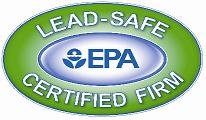 Some states have taken over the RRP and you will need to handle everything through them. As the years go by, more and more states will probably take over RRP. Please check with your state first.
Some states have taken over the RRP and you will need to handle everything through them. As the years go by, more and more states will probably take over RRP. Please check with your state first.
Brief Overview
As you are probably aware, on April 22, 2010 the U.S. Environmental Protection Agency’s (EPA) 40 CFR 745 Subpart E, better known as the Renovation, Repair and Painting (RRP) Rule came into effect. It requires that anyone receiving compensation, who will be disturbing (drill, sand, scrape, pressure wash, saw, remove and etc.) a painted or stain surface, on a pre-1978 residence (or child care facility) be a Lead Safe Certified Firm.
To become a Lead Safe Certified Firm, you will need to fill out this application (instruction found here) and pay an application fee of $300. That’s it. If you are a one man operation, you will still need to become a Lead Safe Certified Firm. Each and every company working on the project is required to be a Lead Safe Certified Firm.
The Lead Safe Certified Firm needs to employ or subcontract a Certified Renovator to oversee the project. Naturally, if you are a 1 man operation, you will need to become a Certified Renovator (CR). To become a CR, you will need to take an 8 hour course and pass a test.
There are literally, thousands of websites that present an overview of RRP, so I won’t repeat what all of them already mention. However, very few places talk about “should you become certified”.
Your Decision To Become Certified
Up until this time, you basically had lead abatement companies and painting contractors. With this new law, you now really have 3 categories … Lead Abatement, Lead Safe Certified Firm and general painting contractor.
If you rarely do work on 1977 or older homes, my suggestion is to simply stop taking on any new work on older homes and build your business working on 1978 or newer homes.
If a large percentage of your work is in/on 1977 or older homes, you basically have 5 options.
- Do the work illegally and hope you don’t get caught.
- Have a lead inspector, lead assessor or certified renovator do a lead inspection on the components you will be disturbing. If no lead based paint is found, you are free to do the work without having to be certified.
- Just become a Lead Safe Certified Firm and sub out the preparation part (or entire job) to another Lead Safe Certified Firm (who will use a CR to oversee the project.
- Let the homeowners do the prep work and you only paint. Putting paint on top of paint is not disturbing the paint.
- Become a Lead Safe Certified Firm, along with having a CR and do the entire project yourself.
With over than 100,000 homeowners each month being personally told about the RRP (via Lead Safe Certified Firms giving estimates), it would be foolish to go with option number 1. All it takes is 1 unsatisfied homeowner to turn you in or issue a lawsuit and your career in painting is over.
Also remember, the EPA or disgruntled homeowner can go after you personally. They don’t have to only go after the company. In this case, being incorporated or an LLC can’t protect you.
Option number 1 is simply not worth it.
Editors note: For an up to date list of the states that have taken over the rule, check The National Center for Healthy Housing.

Great points Dean, thanks.
Great article about EPA’s Renovation, Repair and Painting. I will save this info for my own reference. This actually answered my downside, thanks!